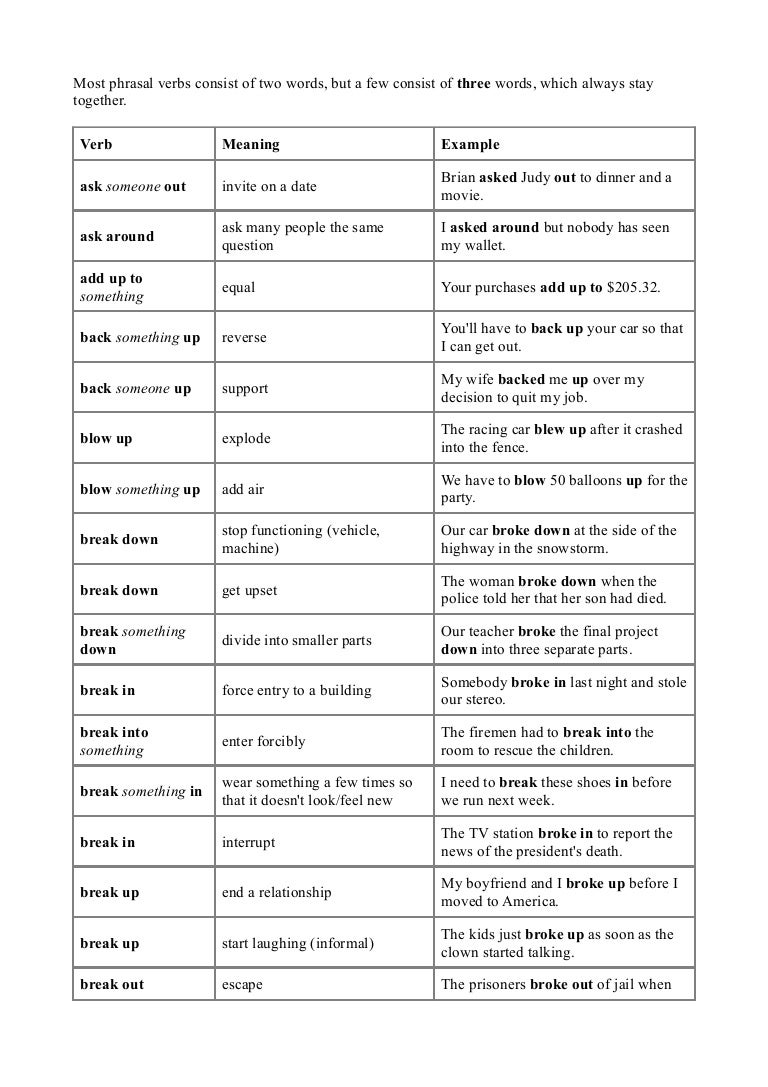
Phrasal verbs list
The most common adverb particles used to form phrasal verbs are around, at, away, down, in, off, on, out, over, round, up: bring in go around look up put away take off Meaning Phrasal verbs often have meanings which we cannot easily guess from their individual parts. (The meanings are in brackets.) The book first came out in 1997. (was published)

A Simple Guide to English Phrasal VerbsWhat are Phrasal verbs? ETI Malta
The Phrasal Verbs Masterclass + PVC Formula helps you master 1000 common phrasal verbs - and understand thousands more!. Here's what you get in this complete training course! - immediate access to the Particle Guide to help you understand thousands of phrasal verbs (worth $99) - 1000 context-based business + everyday phrasal verbs with definitions, examples + quizzes (worth $69)

phrasal verbs Archives EnglishAcademy101
Grammar explanation Phrasal verbs are very common in English, especially in more informal contexts. They are made up of a verb and a particle or, sometimes, two particles. The particle often changes the meaning of the verb. I called Jen to see how she was. ( call = to telephone) They've called off the meeting. ( call off = to cancel)

50+ Useful Phrasal Verbs with UP (with Meaning & Examples) ESLBUZZ
The phrasal verb is to "break in," which has a different meaning to "to break.") to catch up. to blow up. to break down. to cut back. Most phrasal verbs are two words, but three-word ones are also common: to put up with. to go out with. to check up on.

Commonly Used Phrasal Verbs with UP ESLBUZZ
Phrasal verbs in English are combinations of a verb and one or more particles (prepositions or adverbs), forming a semantic unit. Their meaning often differs from the original verb. Learning them requires understanding their types, studying them in context, and regular practice. Try The Blue Book of Grammar and Punctuation: An Easy-to-Use Guide.
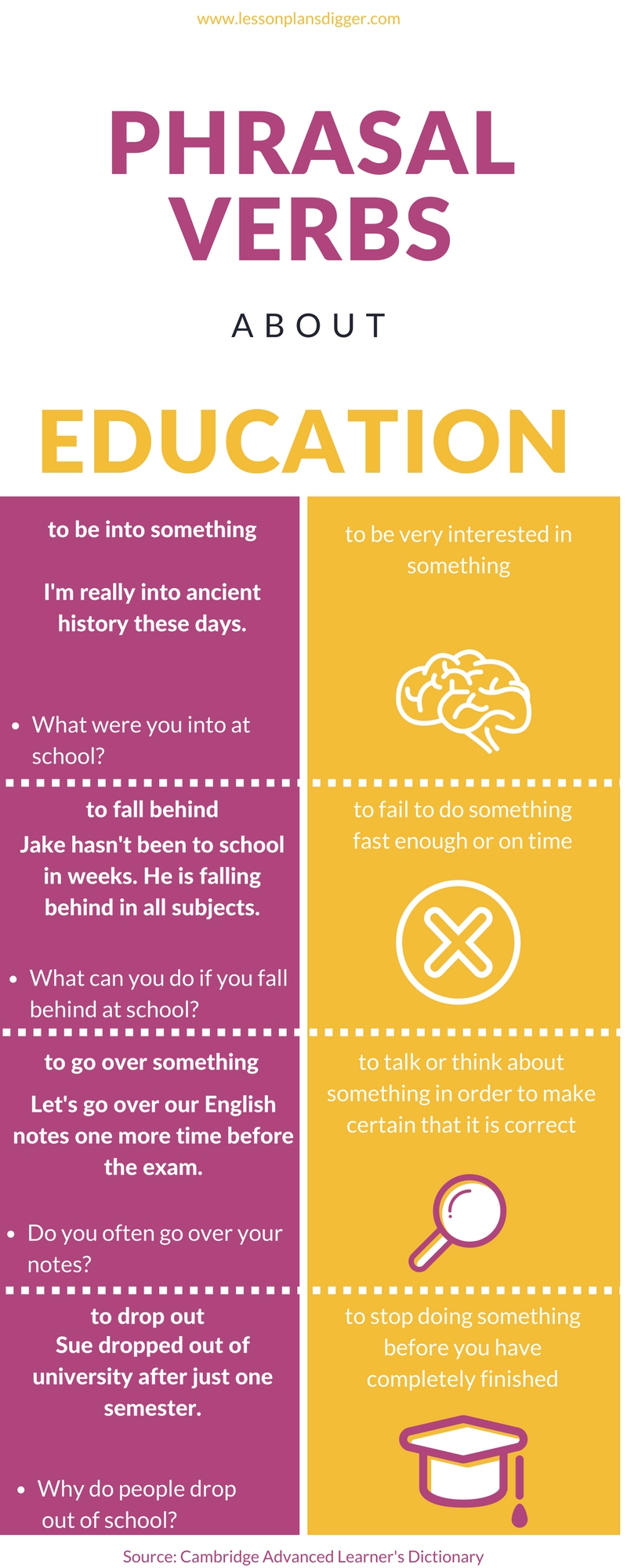
Phrasal verbs about education
Phrasal verbs are definitely worth learning. Here are just a few of the reasons why. First, they're used very commonly in conversations, so knowing phrasal verbs will help you understand other people. Second, as there are so many phrasal verbs, knowing them is a great way to build up your vocabulary. And third, they're used a lot in informal.
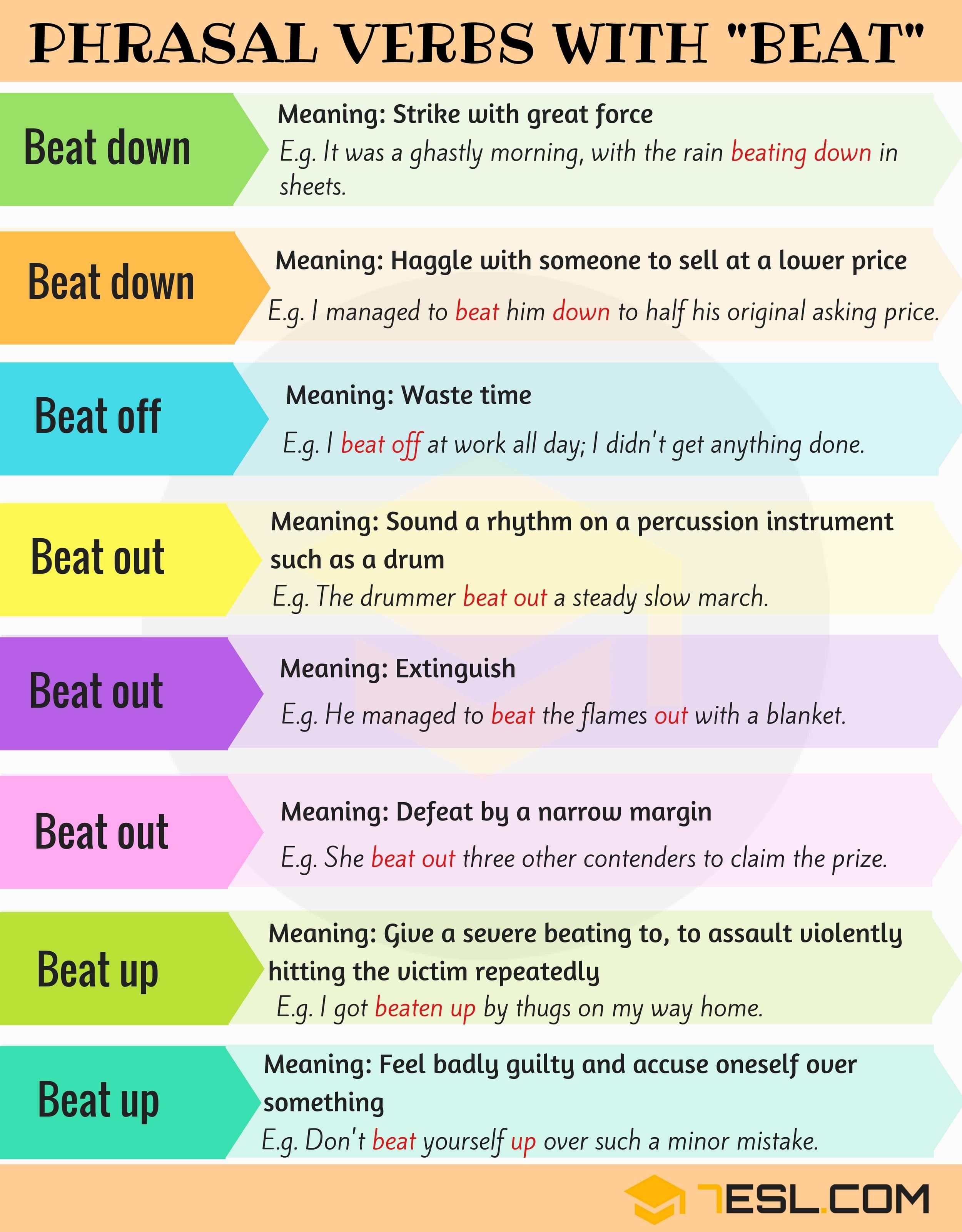
Phrasal Verbs Meanings And Examples sitecustom
200 common phrasal verbs, with. - meaning. - example sentence. ask somebody out. invite on a date. Brian asked Judy out to dinner and a movie. ask around. ask many people the same question. I asked around but nobody has seen my wallet.
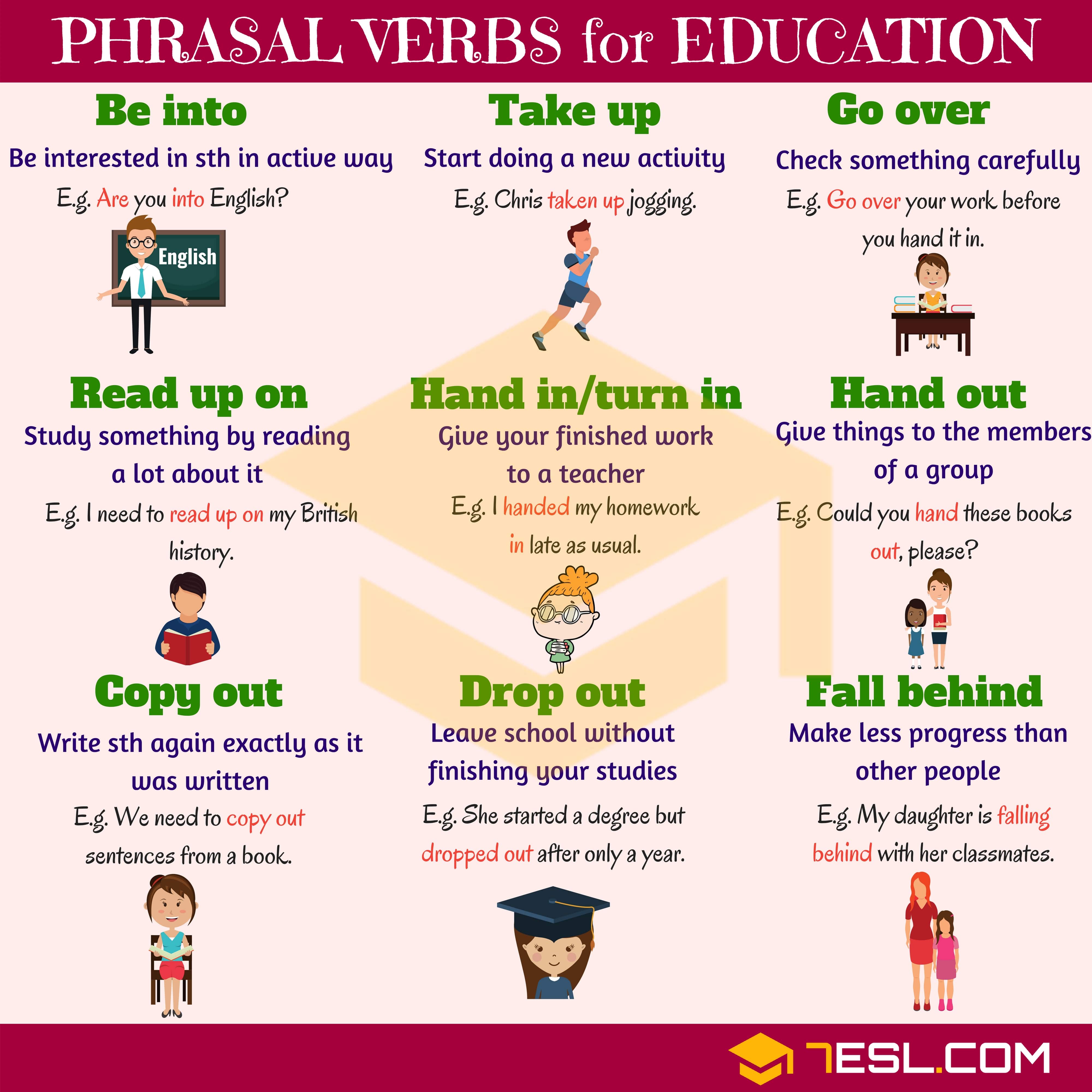
phrasal verbs for esl phrasal verbs list useful Schleun
Separable phrasal verbs. Separable phrasal verbs are transitive (= they take a direct object). The object is underlined below. You can put the object between the verb and particle, separating them: She took the rubbish out. Or you can keep the verb and particle together, and put the object after the particle: She took out the rubbish.

Discovering Phrasal Verbs Beebook
by 7ESL Last Updated on November 20, 2023 The English language has a funny way of complicating even the most simple of things, and unfortunately for you, phrasal verbs are an example of this. Like most things in English, you probably already use them on a regular basis without even realizing it.

Most Useful Phrasal Verbs Pdf communicationmultiprogram
Teaching your students to understand and use phrasal verbs can be a big challenge. We've put this lesson plan together to help. Taking an inductive teaching approach, this lesson plan covers six stages — presentation, introduction, explanation, practice and application, and homework.
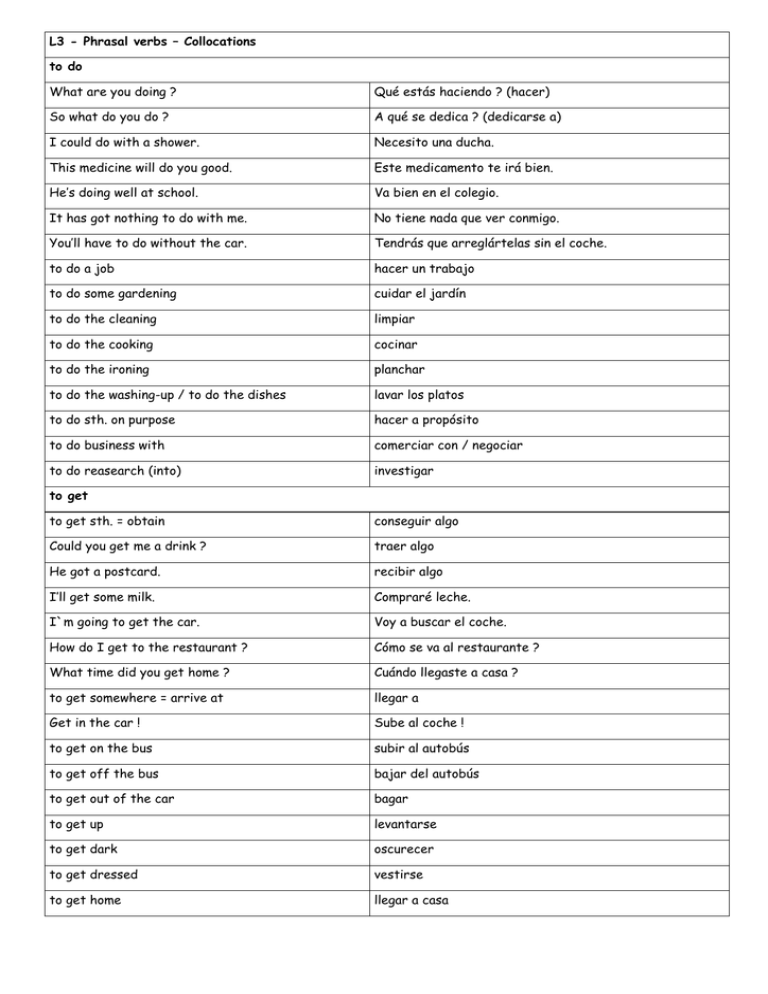
Phrasal verbs
Separable Phrasal Verbs The object may come after the following phrasal verbs or it may separate the two parts: You have to do this paint job over. You have to do over this paint job.When the object of the following phrasal verbs is a pronoun, the two parts of the phrasal verb must be separated: You have to do it over. Verb: Meaning: Example.

Phrasal Verbs with examples (part2)
Download PDF In this lesson, you can learn about English phrasal verbs. You'll see useful tips to help you to understand and use English phrasal verbs. Phrasal verbs are used all the time in English communication. Do you know what 'pick up' means? Or how to use 'cut down' in a sentence? This lesson will help with these phrasal verbs and more!

Phrasal Verbs
1. Bring up — To mention something Type: Separable, transitive Mark was sick and had to miss the party, so please don't bring it up, I don't want him to feel bad for missing it. 2. Bring on — To cause something to happen, usually something negative Type: Separable, transitive His lung cancer was brought on by years of smoking. 3. Bring it on!
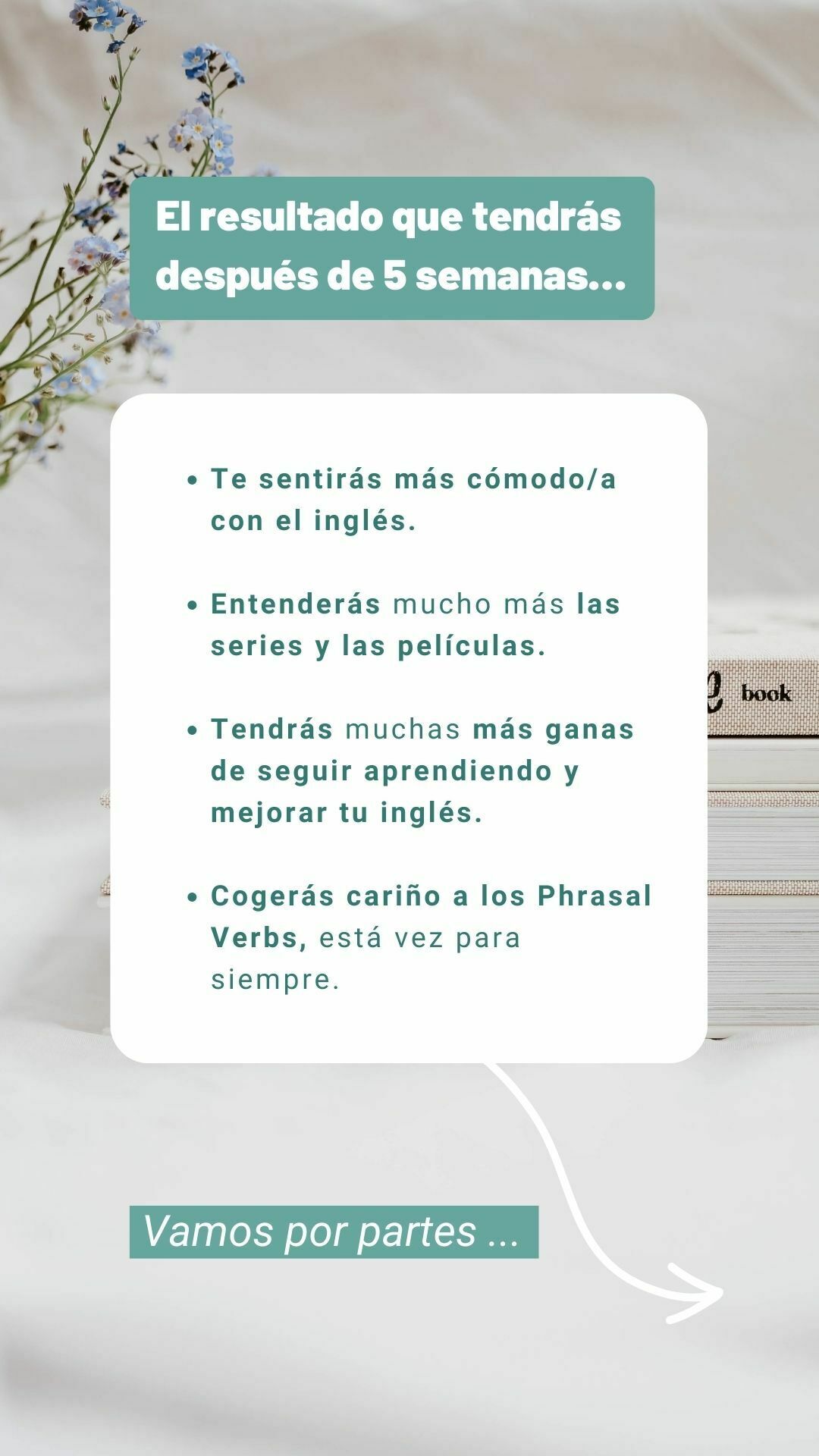
English with Vir Ama los Phrasal Verbs
Type 2 Non-separable phrasal verbs 1. They are transitive (= they have an object), but you can never separate the two parts of the verb. Prepositional verbs (verbs that are followed by a.

phrasal verbs Fly High English
Summary. Phrasal verbs, or as they're sometimes known, multi-word verbs, are very common in English. They're formed of a main verb and a preposition, or sometimes a main verb and two prepositions.
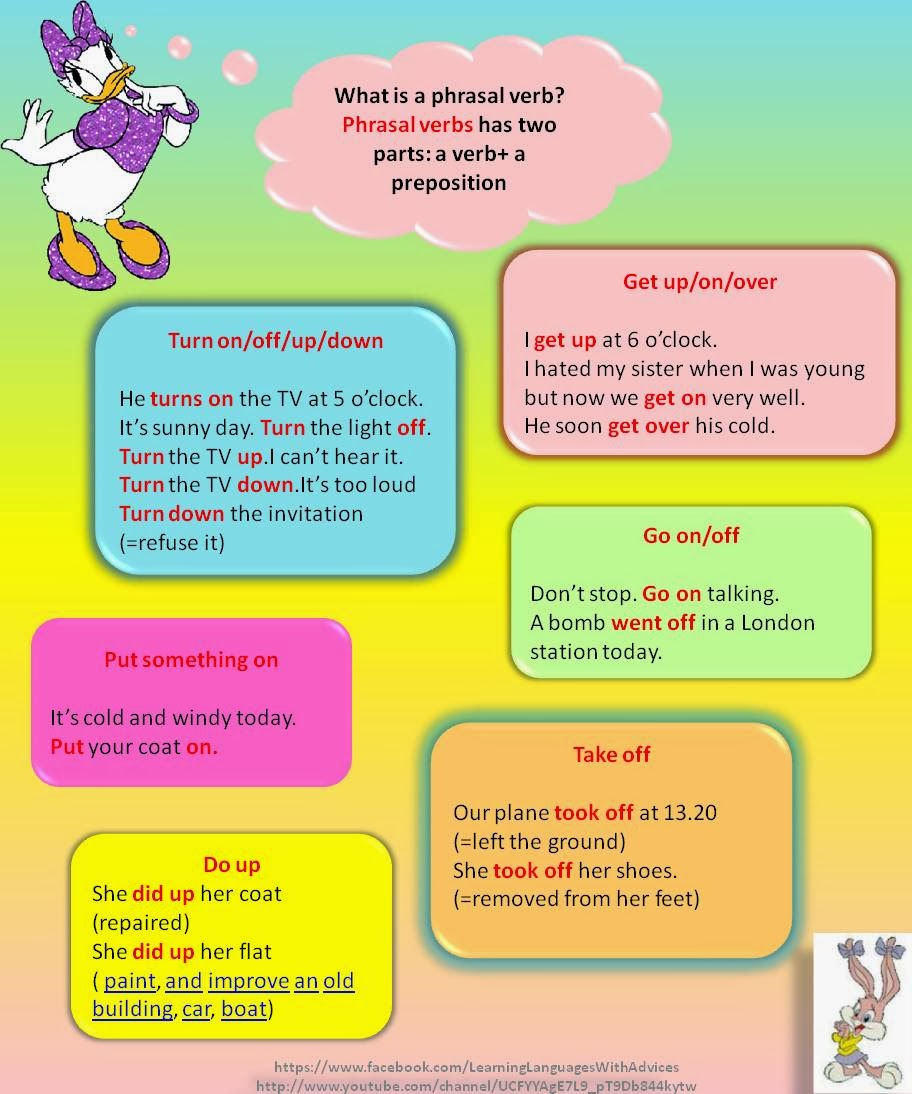
learn different languages with tips Phrasal verbs 1
A phrasal verb is a phrase formed with a verb and an adverb or preposition. The meaning is generally idiomatic. An inseparable phrasal verb can be transitive, meaning an object can follow it. However, if a phrasal verb is intransitive, it cannot be followed by an object. Phrasal verbs with 2 particles (adverbs or prepositions) are inseparable.